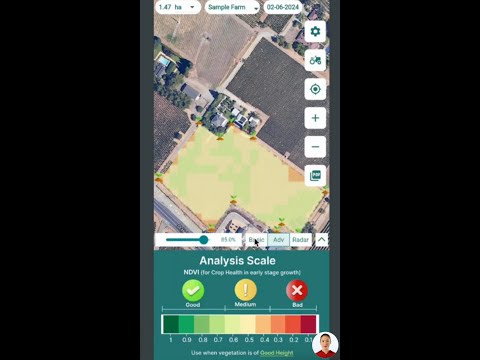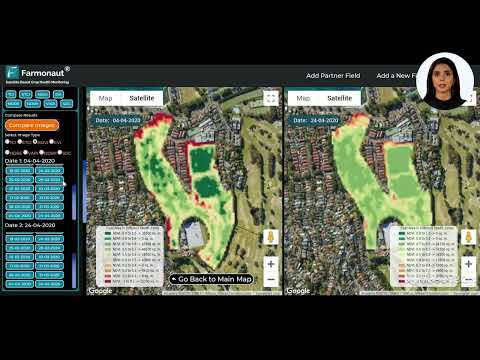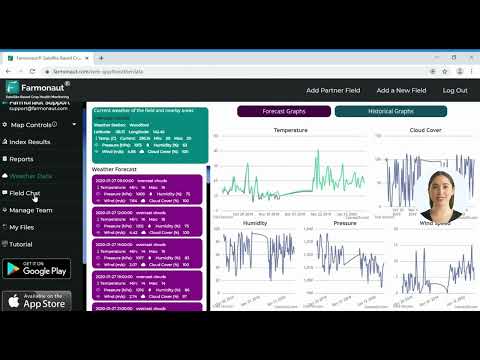Balancing Environmental Stewardship and Economic Growth: New EPA Policies Shape Agriculture’s Future
“The new EPA policy aims to balance environmental stewardship with economic growth, potentially impacting over 2 million U.S. farms.”
In a landmark moment for environmental policy and economic development, we find ourselves at the cusp of a new era in the United States’ approach to balancing ecological preservation with industrial progress. The recent confirmation of Lee Zeldin as the 17th Administrator of the U.S. Environmental Protection Agency (EPA) marks a significant shift in how our nation will address the complex interplay between environmental stewardship and economic growth. This appointment, approved through a bipartisan Senate vote on January 29, 2025, signals a transition towards more sensible regulatory frameworks that aim to address both environmental concerns and industry needs.
As we delve into the implications of this new leadership at the EPA, we must consider the far-reaching effects on various sectors, particularly agriculture, which stands at the intersection of environmental management and economic productivity. The agricultural community, along with stakeholders from engineering, manufacturing, and energy sectors, has expressed support for this pragmatic approach to environmental regulation.

The New EPA Vision: A Balanced Approach
Zeldin’s appointment represents a continuation of the environmental policy direction set by the previous administration, with a renewed focus on finding equilibrium between protecting our natural resources and fostering economic prosperity. This balanced strategy seeks to protect public health, encourage innovation, and maintain operational stability in critical industries while addressing pressing environmental challenges.
Key aspects of this new EPA vision include:
- Revitalization of Energy Sectors: A commitment to policies that support American energy independence while promoting cleaner technologies.
- Job Creation: Emphasis on regulatory reforms that stimulate economic growth and employment opportunities across various industries.
- State Primacy: Strengthening the role of individual states in environmental regulations, allowing for more localized decision-making.
- Collaborative Problem-Solving: Fostering partnerships between the EPA, industries, and environmental organizations to tackle complex issues like water safety and quality.
This approach aligns with the growing need for sustainable practices across all sectors, including agriculture. In this context, innovative solutions like Farmonaut’s satellite-based crop monitoring technology play a crucial role in supporting farmers’ efforts towards efficient resource management and environmental conservation.
Bipartisan Support and Industry Endorsements
The bipartisan confirmation of Zeldin as EPA Administrator reflects a broader consensus on the need for a more balanced approach to environmental policy. Elected officials from both sides of the aisle have voiced their approval, highlighting Zeldin’s potential to bridge the gap between environmental protection and economic interests.
Notable endorsements include:
- Senate Majority Whip John Barrasso: Emphasized the transition to clearer, more sensible regulatory frameworks.
- Senator John Boozman: Praised Zeldin’s understanding of balancing environmental concerns with agricultural needs.
- Senator Shelley Moore Capito: Commended Zeldin’s dedication and service record.
- House Speaker Mike Johnson: Highlighted the potential for revitalizing American energy sectors.
- Senator Ted Cruz: Underscored Zeldin’s promise to address economic and environmental needs simultaneously.
Industry leaders have also voiced enthusiastic support for Zeldin’s nomination:
- Linda Bauer Darr (American Council of Engineering Companies): Praised Zeldin’s leadership capabilities and pragmatic decision-making.
- Phillip Bell (Steel Manufacturers Association): Expressed confidence in Zeldin’s advocacy for manufacturing interests.
- Neil Bradley (U.S. Chamber of Commerce): Asserted that Zeldin’s vision would enable the EPA to fulfill its mission effectively while promoting economic growth.
- Heidi Brock (American Forest and Paper Association): Applauded Zeldin’s pragmatic approach to regulations that protect the environment without stifling industry.
Impact on Agriculture and Environmental Management
The agricultural sector stands to be significantly affected by the new EPA policies. As one of the largest industries interfacing with environmental regulations, agriculture plays a crucial role in both environmental stewardship and economic growth. The National Cattlemen’s Beef Association has expressed optimism about Zeldin’s understanding of agriculture’s role in conservation efforts, indicating a potential for improved relations between the farming community and the EPA.
Key areas of focus for agriculture under the new EPA leadership include:
- Sustainable Farming Practices: Encouraging methods that reduce environmental impact while maintaining productivity.
- Water Management: Addressing issues of water quality and conservation in agricultural operations.
- Pest Management: Developing policies that balance pest control needs with environmental protection.
- Soil Conservation: Promoting practices that preserve soil health and reduce erosion.
In this evolving landscape, technologies like those offered by Farmonaut become increasingly relevant. Farmonaut’s satellite-based crop monitoring system aligns perfectly with the new EPA’s goals by providing farmers with tools to optimize resource use, reduce environmental impact, and improve crop yields.
Explore Farmonaut’s API for advanced agricultural insights
“Farmonaut’s satellite-based crop monitoring technology supports sustainable agriculture across thousands of acres, aligning with new EPA goals.”
Balancing Act: Environmental Protection and Economic Prosperity
The core challenge for the new EPA administration lies in striking the right balance between environmental protection and economic growth. This delicate equilibrium is crucial for ensuring the long-term sustainability of both our natural resources and our economic systems.
Key aspects of this balancing act include:
- Regulatory Reform: Streamlining regulations to reduce unnecessary burdens on businesses while maintaining essential environmental protections.
- Innovation Incentives: Encouraging the development and adoption of clean technologies across industries.
- Resource Efficiency: Promoting practices that maximize resource utilization while minimizing waste and pollution.
- Collaborative Policymaking: Engaging stakeholders from industry, environmental groups, and local communities in the policy development process.

This approach recognizes that environmental stewardship and economic growth are not mutually exclusive goals. In fact, many industries, including agriculture, are finding that sustainable practices can lead to increased efficiency and profitability in the long run.
Access Farmonaut’s API Developer Docs for integration insights
The Role of Technology in Environmental Stewardship
As we navigate this new era of environmental policy, technology plays a pivotal role in achieving the dual objectives of environmental protection and economic growth. Innovative solutions are emerging across various sectors, offering ways to monitor, manage, and mitigate environmental impacts while enhancing productivity.
In the agricultural sector, companies like Farmonaut are at the forefront of this technological revolution. By leveraging satellite imagery and advanced data analytics, Farmonaut provides farmers with crucial insights into crop health, soil conditions, and resource utilization. This technology empowers farmers to make data-driven decisions that optimize yields while minimizing environmental impact.
Key technological advancements supporting environmental stewardship include:
- Remote Sensing: Satellite and drone technologies for monitoring environmental conditions and agricultural operations.
- Precision Agriculture: Tools and techniques that allow for targeted application of inputs, reducing waste and environmental impact.
- Data Analytics: Advanced algorithms that process vast amounts of environmental and operational data to provide actionable insights.
- Clean Energy Solutions: Renewable energy technologies that reduce reliance on fossil fuels in agricultural and industrial operations.
These technological solutions are not just beneficial for individual farmers or businesses; they also provide valuable data and tools for policymakers and regulators. By leveraging these technologies, the EPA can make more informed decisions and develop more effective, targeted regulations.
Addressing Environmental Challenges in the Modern Era
As environmental challenges evolve, so too must our approaches to addressing them. The new EPA leadership under Zeldin is expected to tackle a range of pressing issues, from climate change to water quality, with a fresh perspective that considers both environmental and economic impacts.
Some of the key environmental challenges on the agenda include:
- Climate Change Mitigation: Developing strategies to reduce greenhouse gas emissions while supporting economic growth.
- Water Resource Management: Addressing issues of water scarcity, quality, and conservation across various sectors.
- Air Quality Improvement: Implementing policies to reduce air pollution while supporting industrial development.
- Waste Reduction and Management: Promoting circular economy principles to minimize waste and maximize resource efficiency.
In addressing these challenges, the EPA is expected to adopt a collaborative approach, working closely with state agencies, industry leaders, and environmental organizations. This multi-stakeholder engagement is crucial for developing effective, balanced solutions that meet both environmental and economic needs.
The Future of Environmental Policy and Economic Growth
As we look to the future, the direction set by the new EPA leadership under Zeldin promises a more nuanced approach to environmental policy. This approach recognizes the interconnectedness of environmental health and economic prosperity, seeking to create synergies rather than trade-offs between these two crucial aspects of national well-being.
Key elements of this future vision include:
- Adaptive Regulation: Developing flexible regulatory frameworks that can evolve with changing environmental conditions and technological advancements.
- Innovation-Driven Solutions: Encouraging research and development in clean technologies and sustainable practices across all sectors.
- Collaborative Governance: Fostering partnerships between government agencies, private sector entities, and civil society organizations to address complex environmental challenges.
- Data-Driven Decision Making: Leveraging advanced data analytics and monitoring technologies to inform policy development and implementation.
In this evolving landscape, companies like Farmonaut play a crucial role in bridging the gap between environmental stewardship and economic growth. By providing farmers with tools to optimize their operations and reduce environmental impact, Farmonaut exemplifies the kind of innovative solutions that will be essential in achieving the EPA’s new balanced approach.
EPA Policy Shift Impact Matrix
| Sector | Environmental Stewardship | Economic Growth | Regulatory Framework |
|---|---|---|---|
| Agriculture | Increased focus on sustainable farming practices | Support for innovation in agri-technology | Streamlined regulations for farm operations |
| Energy | Promotion of cleaner energy sources | Revitalization of domestic energy production | Balanced approach to emissions regulations |
| Manufacturing | Emphasis on resource efficiency and waste reduction | Incentives for green manufacturing processes | Simplified compliance procedures |
| Water Management | Enhanced focus on water quality and conservation | Investment in water infrastructure | Collaborative approach to water use policies |
Conclusion: A New Chapter in Environmental Stewardship
As we conclude our exploration of the new EPA policies under Administrator Lee Zeldin, we find ourselves at the beginning of a new chapter in environmental stewardship. This era promises a more balanced approach to addressing environmental challenges while fostering economic growth and innovation.
The confirmation of Zeldin as EPA Administrator marks a significant shift in how the United States will approach the complex interplay between environmental protection and economic development. By seeking to balance these often competing interests, the new EPA leadership aims to create a regulatory environment that protects our natural resources while also supporting the growth and prosperity of American industries.
In this evolving landscape, the role of innovative technologies and data-driven solutions becomes increasingly crucial. Companies like Farmonaut, with their advanced satellite-based crop monitoring systems, exemplify the kind of tools that will be essential in achieving this balance. By providing farmers with the means to optimize their operations, reduce resource waste, and minimize environmental impact, such technologies align perfectly with the EPA’s new vision.
As we move forward, it will be crucial for all stakeholders – from policymakers and industry leaders to environmental advocates and individual citizens – to engage in constructive dialogue and collaboration. Only through such collective efforts can we hope to create a future where environmental stewardship and economic growth go hand in hand, ensuring a sustainable and prosperous future for generations to come.
Earn With Farmonaut: Affiliate Program
Earn 20% recurring commission with Farmonaut’s affiliate program by sharing your promo code and helping farmers save 10%. Onboard 10 Elite farmers monthly to earn a minimum of $148,000 annually—start now and grow your income!
FAQs
- What is the main goal of the new EPA policies under Lee Zeldin?
The main goal is to balance environmental stewardship with economic growth, addressing both environmental concerns and industry needs. - How will these policies affect the agricultural sector?
The policies aim to promote sustainable farming practices while reducing regulatory burdens, potentially benefiting over 2 million U.S. farms. - What role does technology play in the new EPA approach?
Technology, such as Farmonaut’s satellite-based crop monitoring, is crucial in supporting sustainable practices and efficient resource management. - How does the new EPA leadership plan to address climate change?
The approach involves developing strategies to reduce greenhouse gas emissions while supporting economic growth and innovation in clean technologies. - What is the significance of state primacy in the new EPA policies?
State primacy allows for more localized decision-making in environmental regulations, potentially leading to more tailored and effective policies.







